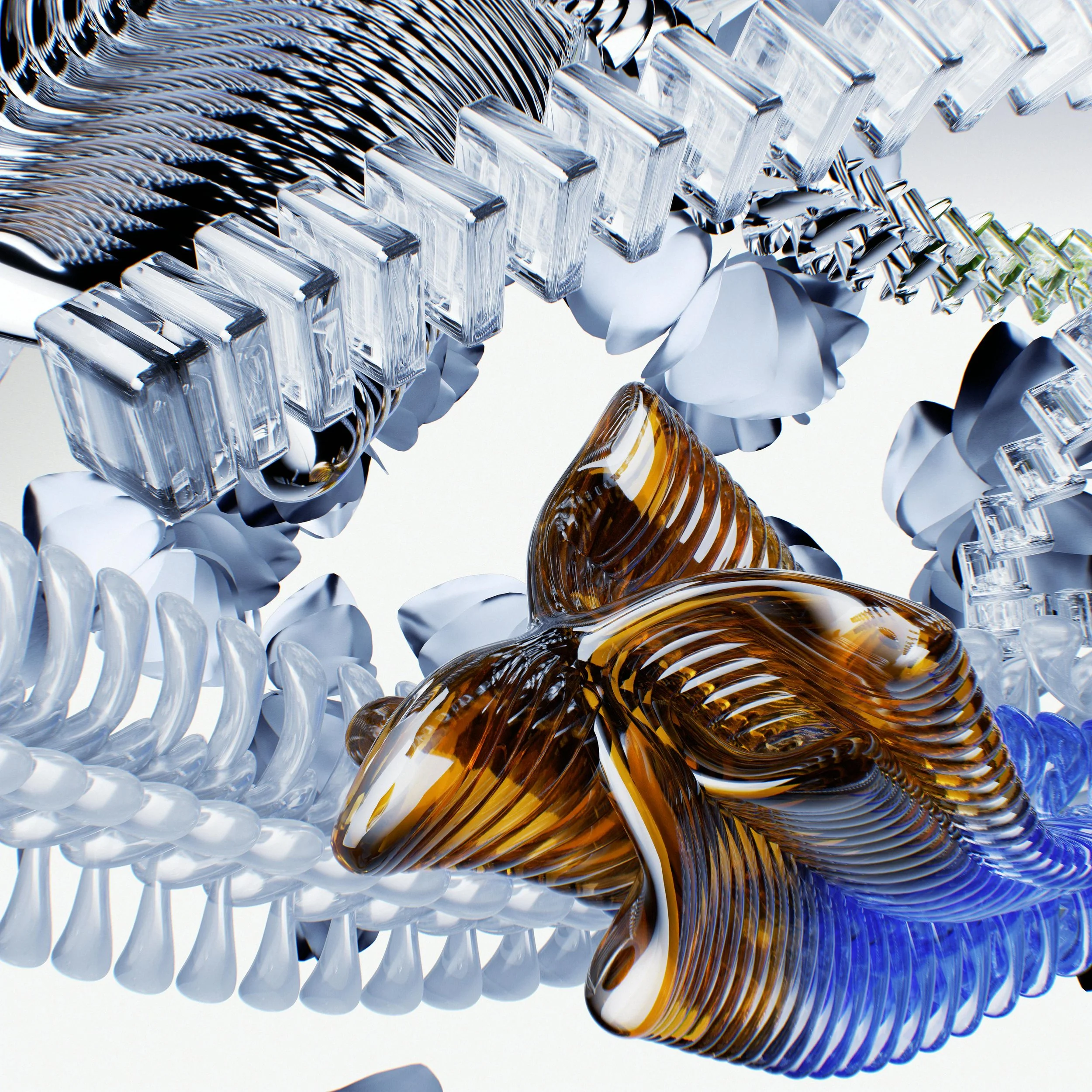
Autonomous Reasoning AI System
Beyond pattern recognition lies the future of enterprise intelligence
The age of reactive AI is ending. Vinciness represents a fundamental shift toward intelligence that thinks before it acts, plans before it executes, and validates before it concludes. By decomposing complexity into elegant reasoning structures and orchestrating solutions across autonomous research, computational analysis, logical validation, and adaptive learning, it transforms how organizations approach their most challenging problems. This isn't just smarter AI it's AI that makes your entire operation more intelligent.
Our Journey and Vision
The journey to Vinciness began with a startling realization: while large language models demonstrate impressive capabilities, their predictive architecture creates a hidden flaw that accumulates across the multi-step reasoning chains required for complex business processes. Rather than trying to inject reasoning into statistical frameworks, we explored a different approach building reasoning systems that use language models as tools within a broader orchestration architecture. This led to insights about how AI systems can systematically decompose strategic goals into executable steps while learning and growing more capable with every challenge.
Reasoning-First Intelligence
Reactive AI stops at recognition; Vinciness goes further by reasoning through complexity like a strategist. It doesn’t jump to answers it frames problems, tests assumptions, and builds structured pathways toward solutions. Every decision is the result of layered analysis that combines investigative research, logical validation, and adaptive execution. The result is an autonomous system that scales like a team, thinks with the discipline of an analyst, and delivers outcomes organizations can trust under real-world conditions.
-
Vinciness begins by reframing the problem. It breaks down high-level objectives into structured trees of goals and subgoals, prioritizing by impact, risk, and cost. This mirrors how experienced consultants or analysts approach large-scale challenges ensuring clarity before execution begins.
-
Instead of offering a single guess, Vinciness coordinates multiple investigative threads in parallel. It retrieves data, validates it across independent sources, synthesizes connections, and delivers results that reflect the work of an expert team operating in sync.
-
Every run adds to a growing base of intelligence. Vinciness doesn’t just answer once; it accumulates knowledge, flags uncertainties, and adapts strategies based on new findings. The result is a system that becomes sharper, more contextual, and more aligned with your needs over time.
GAIA Benchmark Performance
The GAIA benchmark is one of the most advanced tests for evaluating real-world AI reasoning. Unlike simpler benchmarks that focus on single-turn tasks or basic recall, GAIA challenges systems with complex, multi-step problems that require planning, tool use, information retrieval, and long-term logic the way a human expert would approach them. GAIA Level 3 is the most difficult tier, simulating challenges like debugging systems, interpreting overlapping regulations, or modeling financial scenarios that span over 10 reasoning steps.
Vinciness has achieved a 63,7% success rate on GAIA Level 3, placing it among the top-performing systems globally. In comparison, OpenAI’s deep research agents score around 47.6%, and previous state-of-the-art systems averaged closer to 42%. What sets Vinciness apart is its ability to not just generate answers, but to decompose goals, take structured action, and self-correct along the way a critical advantage in business-critical or compliance-driven use cases.

-
Humanity's Last Exam - Where GPT-5 Pro stops, Vinciness delivers.
Humanity’s Last Exam is one of the most difficult benchmarks for artificial intelligence, built from 2,500 expert-written questions across more than 100 academic subjects. Unlike older tests that models have already mastered, this benchmark pushes AI systems beyond memorization and into true reasoning, demanding structured logic, contextual understanding, and the ability to solve problems that even trained experts find challenging.
OpenAI’s own chart shows that even their strongest model, GPT-5 Pro, struggles with many of these questions, while the newest release, GPT-4o, performs even worse. This demonstrates a critical weakness: today’s most advanced systems often give confident answers that are logically flawed or incomplete. Vinciness takes a different approach. By breaking questions into sub-questions, checking each reasoning chain, and validating evidence step by step, it succeeds where other models fail. A clear example of this is a Rawls reciprocity problem from the benchmark GPT-5 Pro answered incorrectly, but Vinciness solved it with a transparent explanation grounded in logic.
This proves that Vinciness is not just another AI system, but a reasoning engine built to handle the hardest challenges with accuracy, consistency, and trust.

Core Capabilities
-
Research Internet
Goes far beyond simple browsing, Vinciness searches the live web, retrieves full text, and asks its own follow-up questions when gaps appear. It evaluates credibility, timeliness, and relevance before deciding what enters the reasoning pipeline. Each cycle self-corrects, ensuring bad leads are discarded and useful insights are deepened. The result is not raw noise but a curated body of knowledge that feels like a ready-made research brief.
-
Process Python
Executes real computations and models using Python, so conclusions aren’t just theoretical they’re tested. From statistical checks to simulations, Vinciness validates its reasoning against concrete outputs. It adapts the scripts it writes, learning what methods best serve the question at hand. This brings rigor and flexibility into every stage of analysis.
-
Reasoning
Vinciness doesn’t just collect data it fuses it into structured reasoning chains. Independent sources are compared, contradictions flagged, and alignments turned into consensus. When an answer isn’t strong enough, it generates new sub-questions and reruns the process, closing gaps on its own. The result is a unified conclusion that’s both defensible and directly actionable.
-
Targeted Web Crawling
When the open web is too broad, Vinciness narrows its focus to specific sites, databases, or repositories. It crawls with precision, extracting what matters without wasting cycles on irrelevant noise. This targeted approach ensures depth, not just breadth, in every research run. It’s how Vinciness uncovers insights hidden in specialized corners of the internet.
-
Query with SQL Chains
Structured data demands structured reasoning. Vinciness runs layered SQL queries that map patterns, relationships, and anomalies across large datasets. These queries aren’t static they evolve as new evidence appears, creating a chain of logic that explains not just what the data says, but why it matters.
-
Script Chain
Complex reasoning often requires multiple steps, and Vinciness automates them seamlessly. By chaining scripts together, it builds workflows that adapt mid-stream, adding or removing steps as needed. Each chain represents not just a task, but a miniature strategy for problem solving flexible, iterative, and self-refining.
-
Computer Vision and Download PNG
Finds and interprets images with precision. Whether it’s retrieving a high-quality diagram, parsing text inside an image, or evaluating visual content for relevance, it integrates visuals directly into the reasoning chain. Every downloaded PNG is not just saved it’s processed, labeled, and ready for use.
-
Customer Service Help
Provides dynamic, knowledge-backed assistance by pulling directly from live reasoning and past research runs. Instead of scripted replies, it adapts answers in real time, supported by source citations and logical consistency. This makes it not just a chatbot, but a service desk powered by autonomous reasoning.
-
Synthesizer
Our compression technology redefines how AI systems consume information. Unlike basic summarization that discards nuance, it achieves 3–5x reduction ratios while preserving the semantic relationships and logical structure needed for accurate reasoning. This means large language models can process far more content without losing the detail required for compliance or legal-grade analysis.
Case Studies

Our Blog










